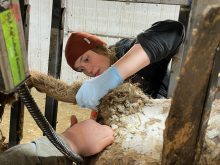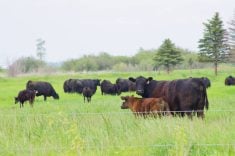The last few years have seen increasing amounts of media attention on the emergence of so-called superbugs.
Bacteria that exhibit resistance to antibiotic medications have been documented since the early days of their use in the 1940s.
Recently, several bacterial species have emerged that contain resistance to multiple drugs, making infections difficult to treat.
Another cause for concern is the lack of novel antibiotic drugs in the clinical trial stage of development. As a result, we have to make due with the drugs we have.
Read Also

Trump’s tariffs take their toll on U.S. producers
U.S. farmers say Trump’s tariffs have been devastating for growers in that country.
The livestock industry has received plenty of negative attention on this topic, often being blamed for the emergence of these resistant bacteria due to mass treatment of food animals.
Bovine respiratory disease is frequent in fall feeder cattle, which is why metaphylaxis treatment, or the treating of all incoming cattle with antibiotics, is a common practice.
A new study published in theCanadian Veterinary Journalexplores this topic in feedlot cattle and attempts to address the question: does antibiotic use in feedlot cattle lead to antibiotic-resistant bacteria?
Researchers allocated 288 auction-mart derived steers to one of three treatment groups: no antibiotics, oxytetracycline added in the feed for 14 days or injectable oxytetracycline on arrival.
Fecal samples were obtained upon arrival, several times during the feeding period and 24 hours before slaughter.
E. coli bacteria was chosen as a representative bacteria because it is easily isolated from feces of cattle and it is a significant contaminant of carcasses at slaughter.
E. coli may also transmit resistance genes to other species of disease-causing bacteria. The isolated bacteria were tested for resistance to common antibiotics, including oxytetracycline.
Low levels of resistant bacteria were detected in the newly weaned steers, indicating the baseline levels of resistance on farms and auction marts is low.
The group that received oxytetracycline in the feed had a significantly increased proportion of steers with antibiotic-resistant bacteria while the group that received injectable oxytetracyline had a slight increase.
All groups had an increase in antibiotic-resistant bacteria late in the feeding period, but this was not attributed to individual animal treatments.
Overall, more animals had E. coli that was resistant to oxytetracycline just before slaughter than they did when they arrived.
Feed antibiotics seem to be related to the greatest increase of antibiotic-resistant bacteria in the feces of feedlot cattle.
Injectable antibiotics also have an impact but to a lesser extent.
This study highlights the importance of wise use of antibiotics in food animals.
It’s often necessary to treat high-risk animals, but the risk of increasing resistant bacteria should be weighed.
Bacteria are notorious for their infidelity. Resistance genes in one species can easily be transmitted to another species.
For example, oxytetracyline resistance in fecal E. coli could easily be transmitted to other fecal bacteria such as campylobacter or salmonella.
Bacteria should be considered a global population that promiscuously swaps genes, including resistance ones, at a frequent and rapid rate.
Are feedlots to blame for the emergence of superbugs? Not necessarily.
However, any use of antibiotics that increases the prevalence of antibiotic resistant genes in bacteria is likely to be a contributing factor.
This includes antibiotic treatments used by veterinarians, food animal producers and doctors.
Many bacterial pathogens are shared between people and animals. It is important to remember that we are all in this together.














